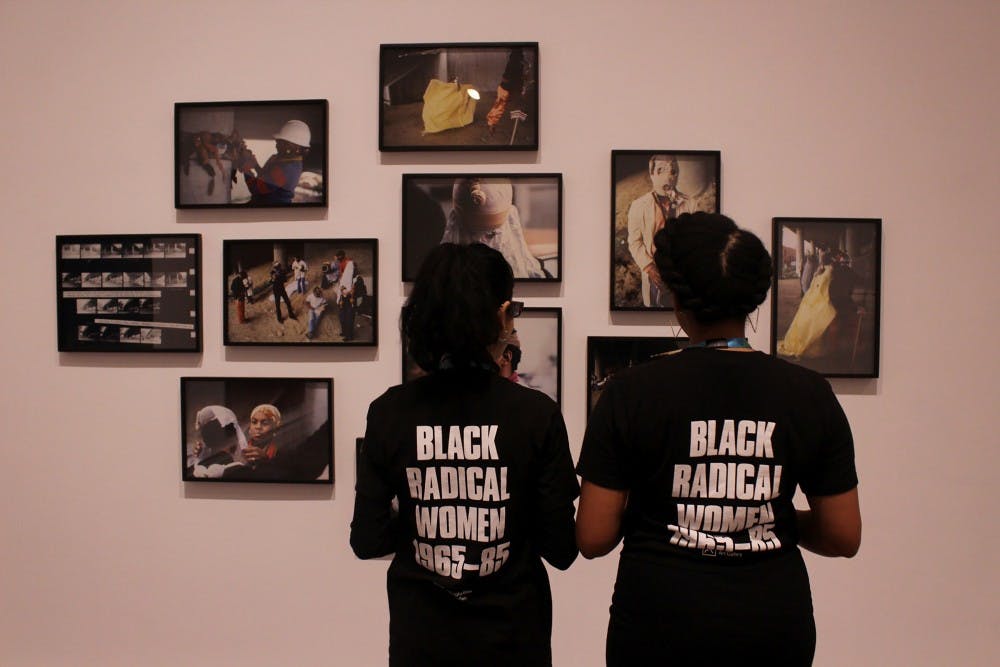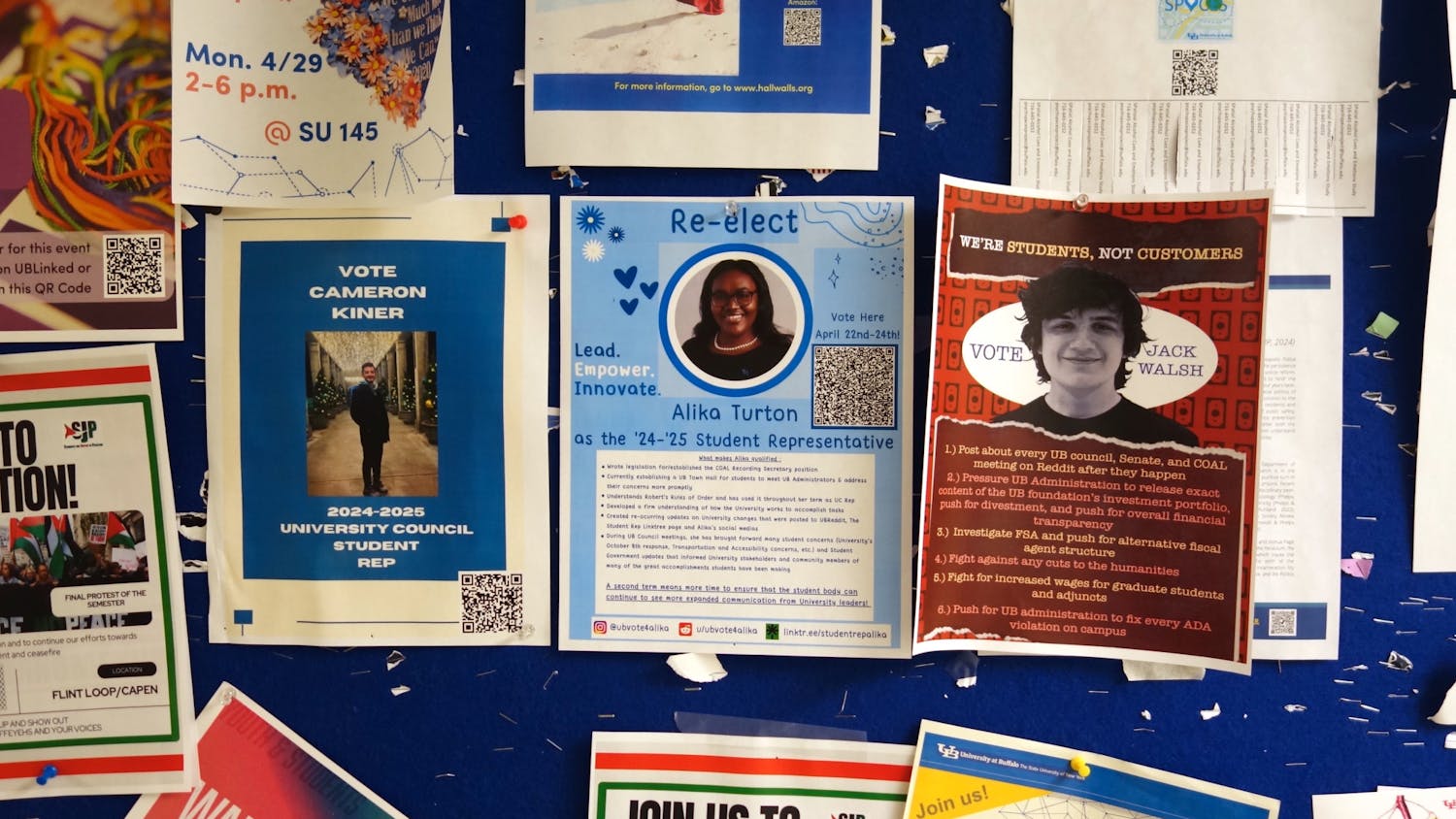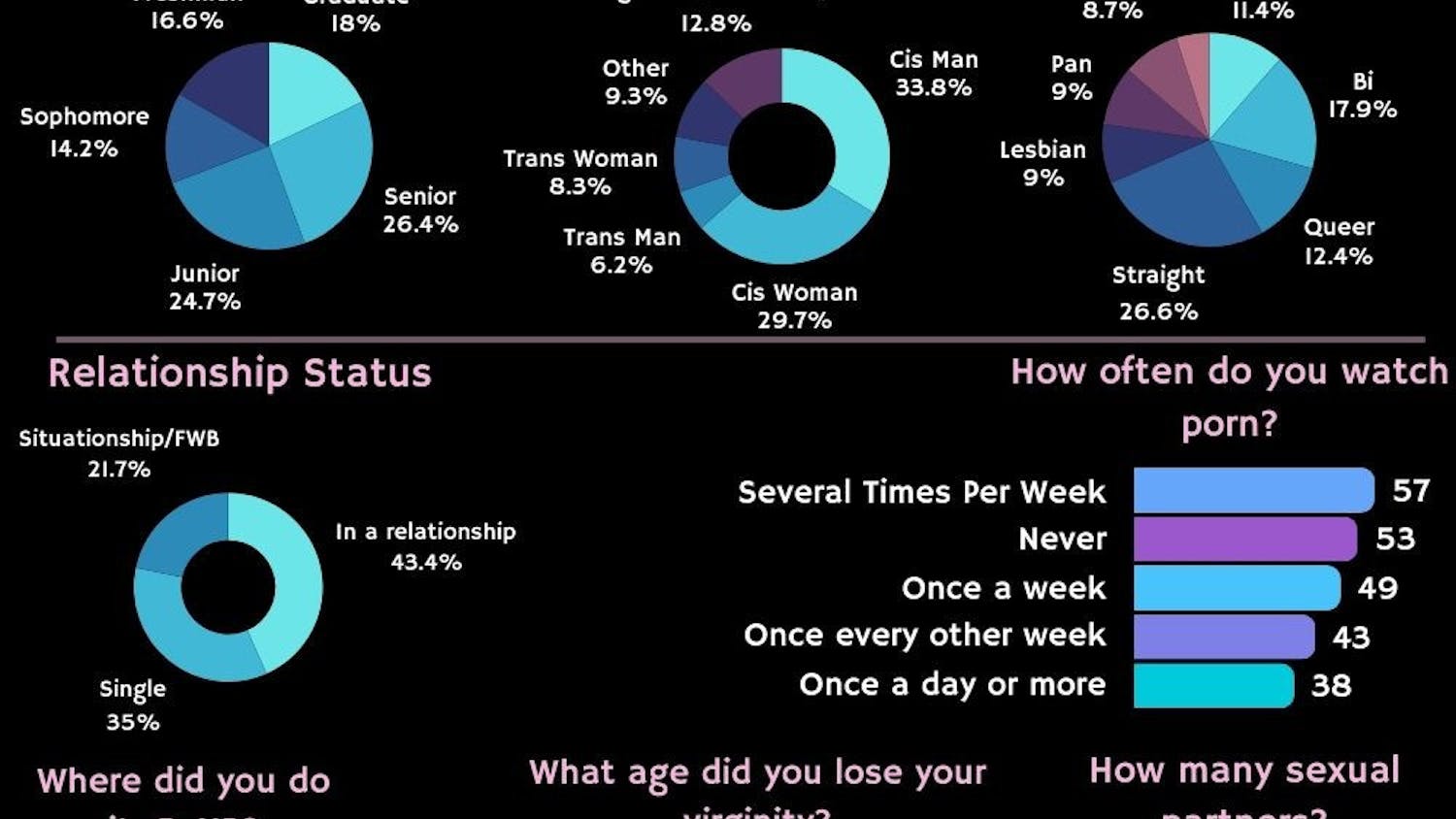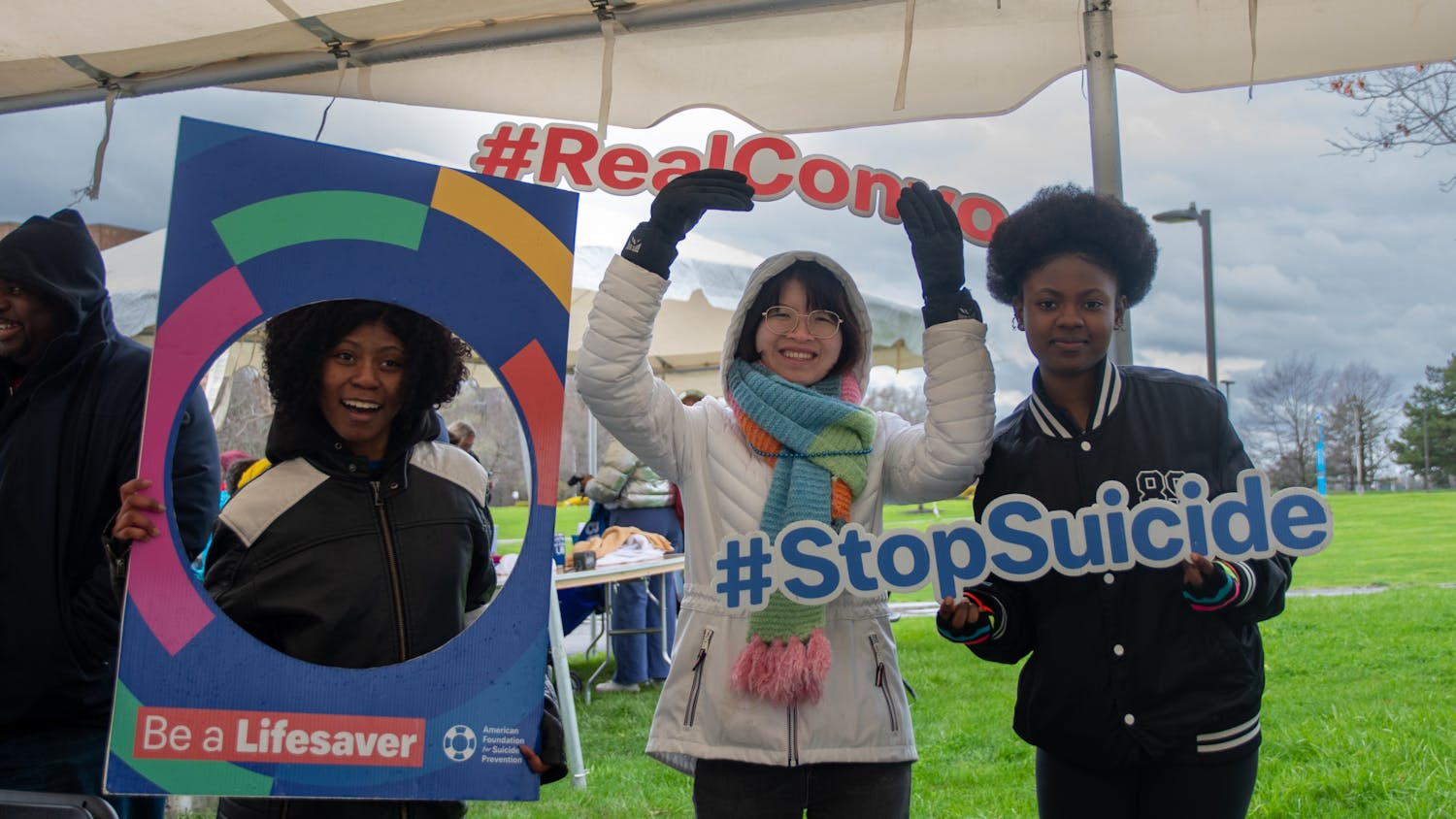The Albright-Knox is rewriting art history by celebrating black women artists.
The gallery opened its latest exhibit this weekend, “We Wanted A Revolution: Black Radical Women, 1965-85.” The exhibit, curated by the Brooklyn Museum, highlights over 200 pieces that encompass a time where black women artists were often underscored, devalued or overlooked. Throughout, artists touched on aspects of black feminism, race, family and gender politics.
The gallery acts as a tour guide through various movements by black women, offering points of reference like magazines and written artifacts. These movements include, among others, the Spiral arts collective in the ‘60s as well as the Just Above Midtown (JAM) gallery that featured artists of color in New York.
Andrea Alvarez, the curatorial fellow at the Albright-Knox, helped organize the exhibit and hopes the diversity of objects and stories inspire visitors.
“Each woman whose work is in the exhibition has her story, and the show is
organized around the networks and collectives they formed over the years to
support each other and help exhibit and promote each other’s work,” Alvarez said.
Curational assistant Jasmine Magaña said the exhibit’s time period makes sense given movements in civil rights, gay liberation and women’s rights.
“The stories that unfold throughout the exhibition –– aided in large part by the ephemera and documentation that support the exhibition –– address the impact these artists had on their time,” Magaña said.
“Even if they weren’t creating art that responded directly to these movements, their activism ranged from organizing and participating in protests, to creating their own spaces to make and display their artwork, and to writing articles and letters in order to get their voices heard.”
Upon entry, museumgoers are introduced to late 20th century black female printmakers. In their work, Barbara Jones-Hogu and Carolyn Lawrence stress the need for black men in their communities, asking them to “leave white b*tches alone” and “unify our families.”
Elsewhere, Elizabeth Catlett’s “Target” stands out in its Public Enemy-esque setup, with a sniper target aimed at the sculptured head of a black man.
The exhibit surveys the iconic photos of Ming Smith, who captured greats like Sun Ra and Grace Jones during her career. Lorraine O’Grady’s glove-based white dress “Mlle Bourgeoise Noire” is featured nearby.
Alison Saar’s “Sapphire” opens a door into a black woman’s breasts, revealing a red light inside. Saar transforms the negative sapphire, or angry black woman, stereotype into a naturally carved creator.
Betye Saar, in her mixed media pieces, also points toward liberating stereotypes by turning Aunt Jemima syrup bottles into Molotov cocktails.
The theme of reinventing negative perceptions carries into Faith Ringgold’s “For the Woman’s House.” Ringgold plays with male-centric roles and depicts black women in their place, re-evaluating imagery of NBA players and presidents.
Dindga McCannon asks for representation in “Revolutionary Sister,” acknowledging the lack of women warriors. The piece, done in tune with the Statue of Liberty, shows a woman in reds and blacks, armed with bullets as she heroically stands at a slant.
Brigette Bragg, a Buffalo resident, came for the exhibit’s opening without knowing anything about the artists and left appreciating the gallery’s efforts.
“I really liked [Dindga McCannon]’s piece. I didn’t notice the bullets on the woman in the painting and the patchwork, so it was all really nice,” Bragg said. “I feel like this exhibit gives black women a type of agency that they really didn’t have before this time period, that I know of. So I feel like it’s definitely important.”
“We Wanted A Revolution” is viewable at the Albright-Knox’s 1905 Building until May 27. Student admission to the museum is $8 with a student ID.
Benjamin Blanchet is the senior features editor and can be reached at benjamin.blanchet@ubspectrum.com.

Benjamin Blanchet is the senior engagement editor for The Spectrum. His words have been seen in The Buffalo News (Gusto) and The Sun newspapers of Western New York. Loves cryptoquip and double-doubles.





